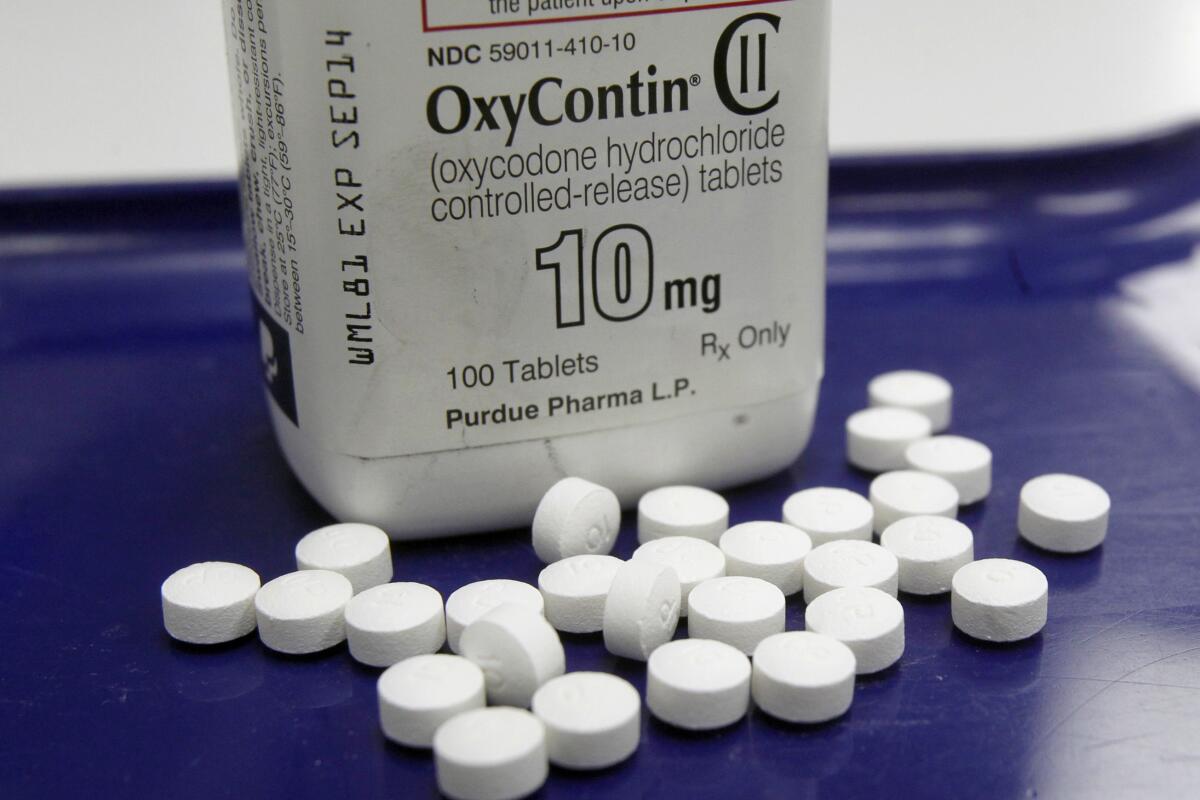Revamped OxyContin hasn’t curbed abuse and overdoses, experts say

- Share via
WASHINGTON — A panel of government health advisors said Friday there was no clear evidence that a harder-to-crush version of the painkiller OxyContin designed to discourage abuse actually resulted in fewer overdoses or deaths.
The conclusion from the Food and Drug Administration advisory panel comes more than a decade after Purdue Pharma revamped its blockbuster opioid, which has long been blamed for sparking a surge in painkiller abuse beginning in the 1990s.
In a series of nonbinding votes, the FDA experts said that the updated OxyContin appeared to cut down abuse via snorting and injecting, compared to the original drug. But panelists overwhelmingly ruled that data from Purdue and other researchers did not show that the reformulation curbed abuse overall or led to fewer overdoses.
Panelists said the shortcomings were due, in part, to the challenges of studying overdoses, which often involve multiple drugs.
“I think it’s very difficult to tease out cause of death and overdose,” said Dr. Lewis Nelson of Rutgers University. “Overall, I think the quality of evidence was fairly poor.”
The long-acting OxyContin tablets can still be misused by simply swallowing them, which remains the most frequent route among those with opioid addiction.
The FDA will consider the group’s opinions as it weighs whether to revisit OxyContin’s terms of approval. That could include scaling back the drug’s prescribing labeling, which currently states that it is “expected to” reduce abuse via injecting and snorting.
Purdue’s 2010 revamped OxyContin was the first of several opioids developed by drugmakers to help curb abuse. But whether the drugs met that goal remains unclear and the FDA is reviewing their use.
These so-called abuse-deterrent formulations account for just 2% of U.S. opioid prescriptions. The vast majority of opioids prescribed are generic versions of short-acting opioids like hydrocodone.
Purdue representatives said during the meeting that multiple studies showed the updated tablets are harder to crush and dissolve, making them harder to snort or inject. They said those changes represent a “meaningful incremental improvement” over the original OxyContin launched in 1996.
Data submitted by Purdue showed both prescribing and illegal trafficking of OxyContin decreased after the company pulled and replaced the original version of the drug.
But panelists said it was impossible to decipher whether those positive trends were due to the reformulation or a host of other factors affecting opioid use, including government crackdowns on pill mills and an influx of illegal opioids like heroin and fentanyl.
Several studies suggest many people who abused OxyContin switched to generic pain pills or illicit opioids, but patterns of switching varied widely across the country and populations, further blurring the drug’s overall impact.
Purdue said in a statement following the meeting it would continue to work with the FDA as it reviewed the OxyContin studies. The company declared bankruptcy last year in an effort to settle thousands of lawsuits accusing it of over-promoting OxyContin.
U.S. drug overdose deaths hit a new high last year of 71,000, according to federal data, driven mainly by fentanyl and similar synthetic opioids, which were involved in about half of all deaths. Deaths tied to prescription overdoses have plateaued at about 15,000 annually. The slowdown follows years of prescribing restrictions and warnings aimed at physicians.
More to Read
Sign up for Essential California
The most important California stories and recommendations in your inbox every morning.
You may occasionally receive promotional content from the Los Angeles Times.










